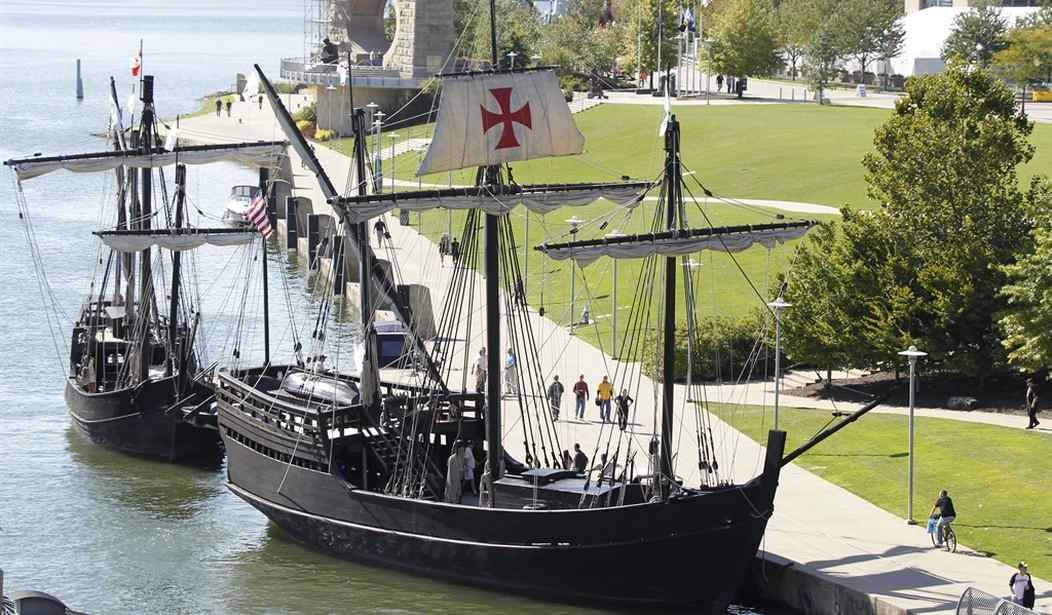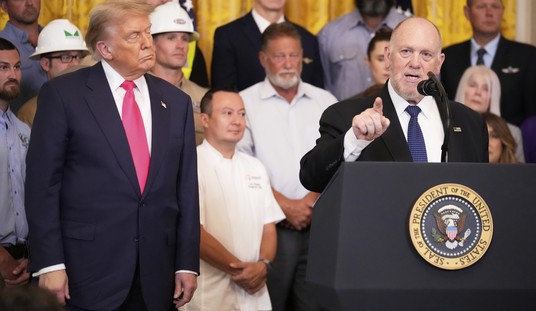On Columbus Day, I like to think about the dangers and excitement of the Age of Exploration, and especially the psychological drama from Christopher Columbus’ first trip westward, sailing for days on end, expecting to hit land at any time, and finding much more open ocean than the experts of his age thought was out there. The pressure on the crew, who also had an idea of how far they were supposed to have left to go, and seeing that distance pass behind them, was immense. Their supplies were dwindling, and Columbus knew that mutiny was on many sailors’ minds.
That first trip probably would have been a lot worse, and they may never have made landfall at that island in the Bahamas in October 1492, had there been a hurricane season like this year. According to the National Hurricane Center, there have so far been six hurricanes and 12 tropical/subtropical storms in the Atlantic.
That being said, while many alarmists in the media do everything they can to make it seem as if hurricanes are getting worse, more frequent, “wetter,” every year, the data do not bear it out. There is a reason why some interpretations of hurricane data might make it seem like things are getting worse, and that boils down to historic hurricane tracking, which goes all the way back to the voyages of Columbus.
The word “hurricane” itself actually comes from the name of an evil storm god worshiped by the first indigenous island people, the Tainos, whom Columbus contacted.
Bad weather plagued all the journeys in one way or another, but nothing frightened Columbus like a hurricane. His first encounter with one is also the first European record of any hurricane; it occurred in September 1494, and after the experience, he quickly learned the signs of an approaching cyclone. The worst damage from a hurricane came in 1502. Columbus warned a Spanish treasure fleet that a hurricane was approaching, but they didn’t listen, and while Columbus’ fleet was able to ride out the storm with minimal damage on the lee side of Hispañola, the Spanish took the full force of the hurricane and lost more than 20 ships and about 500 men.
Many of the ships used for the cross-Atlantic explorations were much smaller than we usually imagine, and this was a tactical choice, especially after the return and reports given by Columbus after his first journey. Columbus’ flagship, the Santa María, probably had only 70 or so feet of deck space, and carried a crew of 40 sailors. There were no bunkrooms; men slept on the floor where they found space.
The Caribbean has many shoals and archipelagos, and to run a ship aground in newly-charted territory was obviously dangerous. However, as the Spanish learned, these ships that rode high in the water were threatened with total destruction if they took a hurricane head-on.
Records like the ones kept by Columbus and his fellow voyagers are now indispensable for meteorologists who depend on them to piece together part of the picture of weather history. Sailors kept great records, which is how they knew to plot their courses and the timing of their departure from safe harbor so that they avoided being in hurricane hot zones during the peak of the season.
While this information is essential to weather historians, the average journalist may struggle to correctly interpret records that include this kind of historic data. They might not realize that sailors certainly didn’t catch every storm, especially the smaller ones. This can lead to a sort of reporting bias in hurricane trend data. The National Hurricane Center gives a great overview of the growing improvements in hurricane detection and monitoring, from mere ship logs, and eventually hurricane hunter aircraft in the 1940s, which could find and monitor storms that were occurring in the open ocean you would never notice otherwise. In the 1970s, geostationary satellites made it possible to monitor even larger sections of the Atlantic at once, and today, we have modern satellite technologies that give us spectacular views and live updates on even the weakest storms that sailors hundreds of years ago might have missed.
This year so far, we seem to have had an above-normal Atlantic hurricane season. Many of the storms this year formed in the Atlantic and never made landfall, intensifying and fizzling out over water where, without the aid of those satellites, we may have never heard about them.
It’s amazing to think about what it took to get us where we are today in the field of meteorology. While many might not know it, we owe a lot to those early explorers and their dutiful recordkeeping, including and maybe especially Christopher Columbus.
Linnea Lueken ([email protected]) is a research fellow with the Arthur B. Robinson Center on Climate and Environmental Policy at The Heartland Institute. Twitter: @LinneaLueken













Join the conversation as a VIP Member